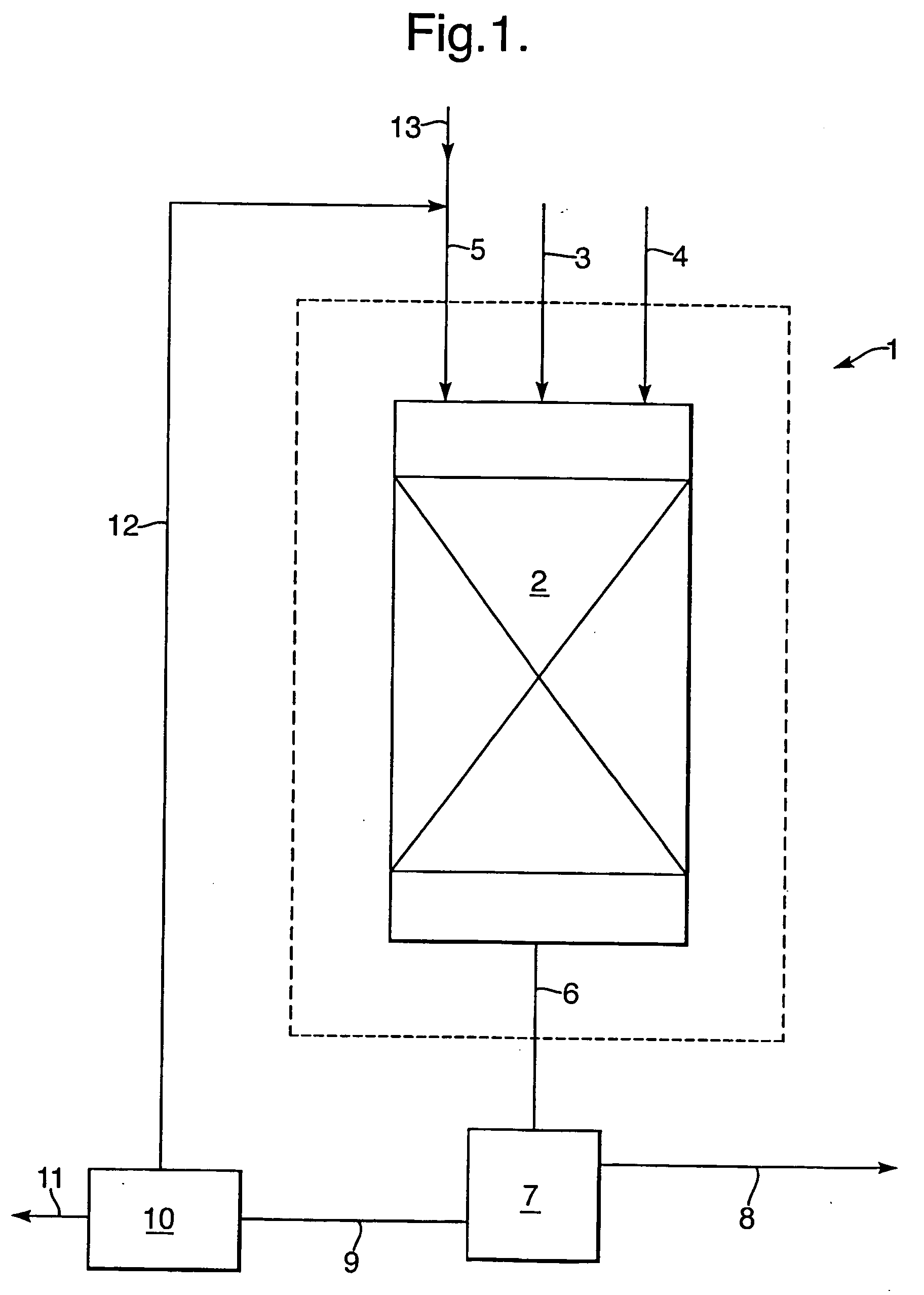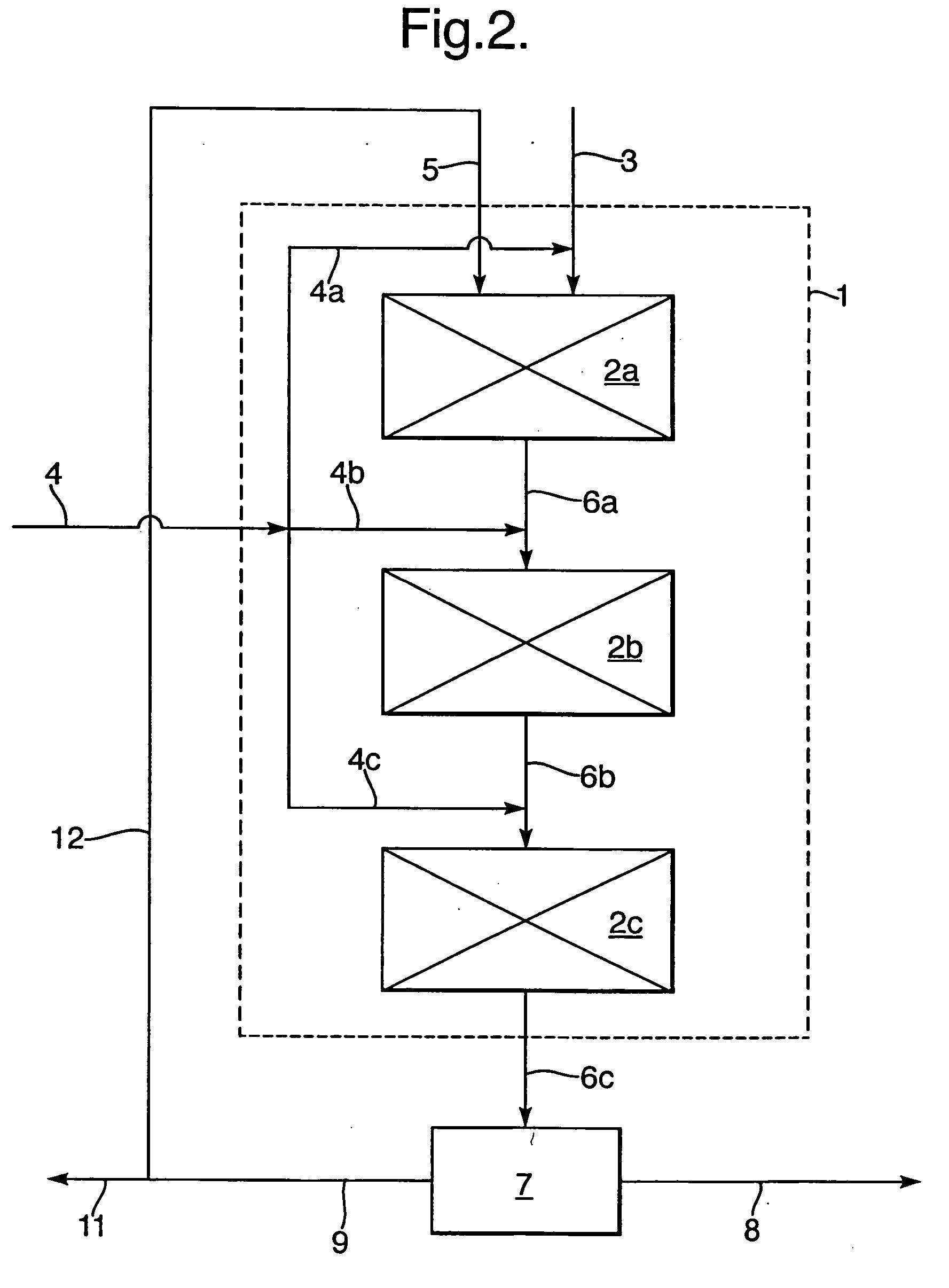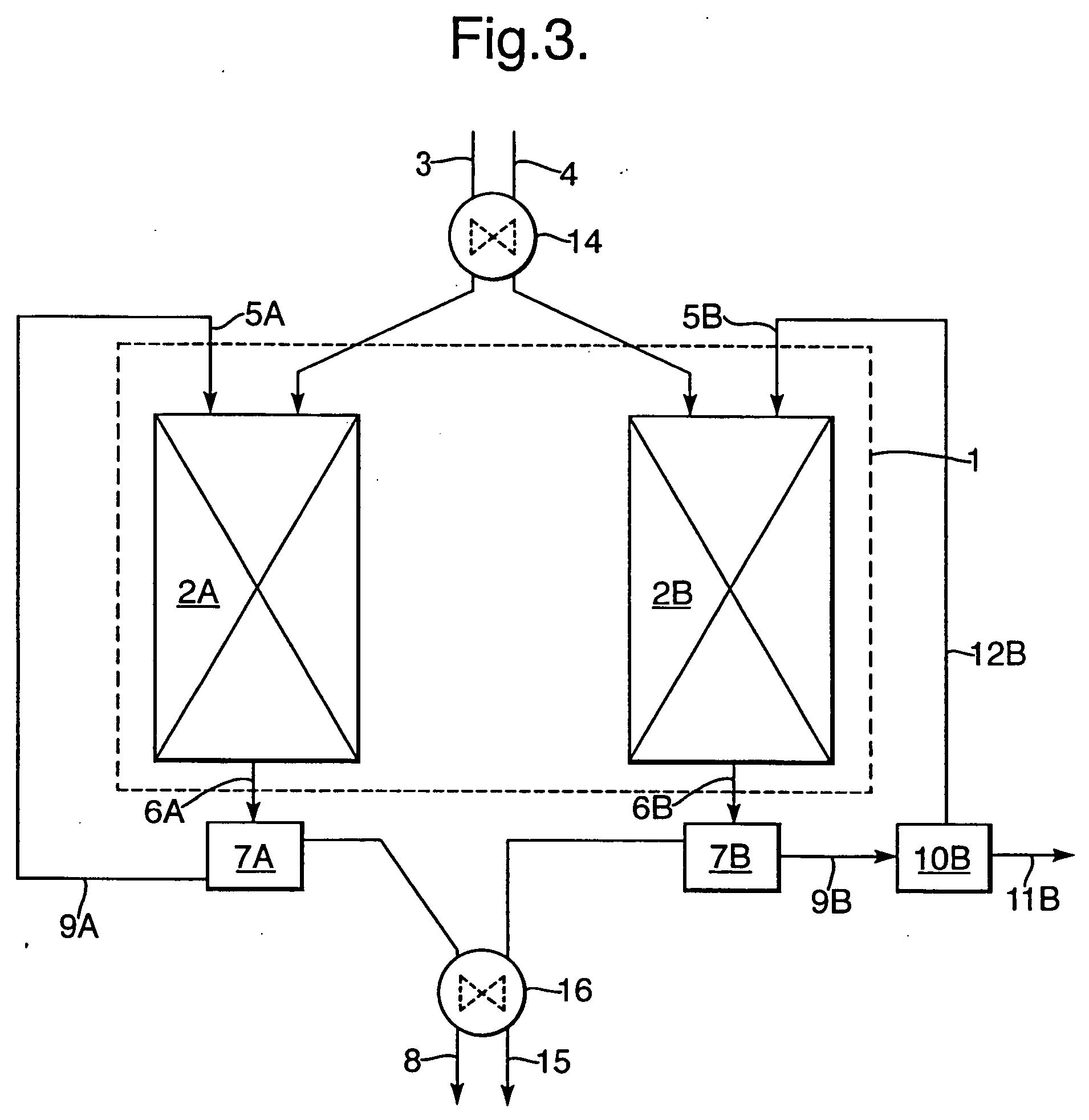Process for the selective oxidation of hydrogen sulfhide
- Summary
- Abstract
- Description
- Claims
- Application Information
AI Technical Summary
Benefits of technology
Problems solved by technology
Method used
Image
Examples
example 2 (
According to the Invention)
[0078] A reactor tube was loaded with catalyst and mounted in a reactor system as described in Example 1. The reactor was pressurized to a pressure of 30 bar g using a nitrogen flow. Toluene was then supplied to the reactor tube continuously at a rate of 30 grams / hour and the temperature of the tube was set at 135° C. The nitrogen flow was stopped and a feed gas comprising 15 vol % H2S in methane and a gas comprising 4 vol % of molecular oxygen in helium were mixed with the toluene stream to be supplied to the reactor tube at flow rates of 3.1 and 5.9 Nl / h, respectively, upstream of the oven.
[0079] After 48 hours at 30 bar g, the pressure was decreased to 15 bar g.
[0080] After 72 hours at 15 bar g, the pressure was increased to 90 bar g and a feed gas comprising 7 vol % H2S in methane and a gas comprising 4 vol % of molecular oxygen in helium were mixed with the toluene stream to be supplied to the reactor tube at flow rates of 4.8 and 4.2 Nl / h, respecti...
example 3 (
According to the Invention)
Catalyst Preparation
[0085] A precipitated iron oxide on silica powder, denoted as ABS 50 with a nominal composition of 50% wt Fe2O3 and 50 % wt SiO2, a particle size D[v,50] of 10 micron and a BET surface area of 270 m2 / g, was obtained from Euro Support B.V. (Amersfoort, NL). The powder was treated in air at 450° C. for 2 hours, cooled down to room temperature. The resulting powder is used as catalyst A.
Selective Oxidation
[0086] A 250 ml autoclave reactor equipped with a magnetically coupled stirrer, a gas manifold to supply metered amounts of a gas via two separate dip tubes, a back-pressure regulator, a wet gas test meter and an on-line gas chromatograph was used for the selective oxidation experiment. The autoclave was filled with 306 grams of solid sulphur and 20.3 grams of catalyst A. The autoclave was heated to 135° C. After 2 hours, the stirrer was started at 800 rpm. The vessel was pressurized to 40 bar g using a gaseous stream of 7 vol % H2S ...
example 4 (
According to the Invention)
Catalyst Preparation
[0090] 273.6 grams of the ABS 50 powder (see EXAMPLE 3) was mixed with 64.1 grams of de-ionized water, 60 grams of a 5% wt aqueous solution of poly vinyl alcohol and 16 grams of ammonia (25%) to an extrudable dough with a solids content of 53.2 wt % and a pH of 9.5. This mix was extruded using a 1.6 mm diameter trilobe die-plate. The extrudates were dried at 120° C. and calcined at 550° C. for 2 hours and used as catalyst B.
Selective Oxidation
[0091] A reactor system was used for the selective oxidation experiment, the system comprising: [0092] a reactor tube; [0093] a gas manifold to supply metered amounts of gases via two separate feed lines to the reactor tube; [0094] a gas-liquid separator directly downstream of the reactor tube [0095] a liquid recycle pump for recycling liquid from the gas-liquid separator to the reactor tube; [0096] a liquid holding vessel that is connected to the liquid recycle system, from which liquid can b...
PUM
 Login to View More
Login to View More Abstract
Description
Claims
Application Information
 Login to View More
Login to View More - R&D
- Intellectual Property
- Life Sciences
- Materials
- Tech Scout
- Unparalleled Data Quality
- Higher Quality Content
- 60% Fewer Hallucinations
Browse by: Latest US Patents, China's latest patents, Technical Efficacy Thesaurus, Application Domain, Technology Topic, Popular Technical Reports.
© 2025 PatSnap. All rights reserved.Legal|Privacy policy|Modern Slavery Act Transparency Statement|Sitemap|About US| Contact US: help@patsnap.com



